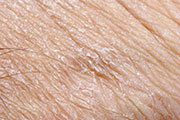Report describes severe symptoms after eating soy for esthetician with atopic dermatitis, hand eczema
TUESDAY, Sept. 15, 2015 (HealthDay News) — Reduced skin barrier function seen in patients with atopic dermatitis may cause percutaneous sensitization by various proteins, such as food, according to a case report published in the September issue of The Journal of Dermatology.
Akiko Yagami, M.D., from Fujita Health University School of Medicine in Japan, and colleagues described the case of a 30-year-old esthetician with atopic dermatitis who developed anaphylactic symptoms after eating soy. She had no history of hand eczema or soy food allergy before working as an esthetician; she started experiencing symptoms of itchy eczema on her fingers several months after starting to touch cosmetic lotions at age 23 years. She experienced severe symptoms including urticaria and dyspnea after eating soy products at age 28 years.
The researchers found that in laboratory tests, she had specific immunoglobulin E antibodies for soy, Japanese cedar, and Japanese white birch. A skin prick test was positive for soy extract, the cosmetic lotion used by the patient, and a commercially available soy milk. In three healthy controls, skin prick tests of the same cosmetic lotion yielded negative results.
“The patient with atopic dermatitis, which tends to reduce the barrier function of the skin, was percutaneously sensitized to soy protein through frequent contact with cosmetic lotions containing soy-based ingredients in a humid environment while working as an esthetician and she subsequently developed anaphylactic reaction to soy,” the authors write.
Copyright © 2015 HealthDay. All rights reserved.








